React Chart with Multi-Style Series
Demonstrates how to use multiple styles on a single series on React Charts using SciChart.js, High Performance JavaScript Charts. This uses a RenderDataTransform to split the data so that we can draw the selected points using additional customised drawingProviders. This means that modifiers still see a single series with the original data.
drawExample.ts
index.tsx
theme.ts
1import {
2 BaseRenderDataTransform,
3 XyyPointSeriesResampled,
4 NumberRange,
5 RenderPassData,
6 IPointSeries,
7 XyDataSeries,
8 SciChartSurface,
9 NumericAxis,
10 TrianglePointMarker,
11 XyScatterRenderableSeries,
12 EllipsePointMarker,
13 PointMarkerDrawingProvider,
14 IXyyPointSeries,
15 IPointMarker,
16 FastColumnRenderableSeries,
17 GradientParams,
18 Point,
19 ColumnSeriesDrawingProvider,
20 ZoomExtentsModifier,
21 MouseWheelZoomModifier,
22 DataPointSelectionModifier,
23 LineSeriesDrawingProvider,
24 FastLineRenderableSeries,
25 ILineSeriesDrawingProviderProperties,
26 ELineDrawMode,
27 OhlcPointSeriesResampled,
28 IOhlcPointSeries,
29 RolloverModifier,
30 IPointMetadata,
31 SeriesInfo,
32 NativeTextAnnotation,
33 ECoordinateMode,
34 EHorizontalAnchorPoint,
35 EVerticalAnchorPoint,
36 IStrokePaletteProvider,
37 parseColorToUIntArgb,
38 EStrokePaletteMode,
39 IRenderableSeries,
40} from "scichart";
41import { appTheme } from "../../../theme";
42
43/**
44 * This transform turns xy data into ohlc. Unselected points are in y (close).
45 * Selected points in low for pointmarkers, and selected plus points either side in high for lines.
46 * If you only need this for points or columns, you could transform to Xyy instead
47 */
48class SplitRenderDataTransform extends BaseRenderDataTransform<OhlcPointSeriesResampled> {
49 protected createPointSeries(): OhlcPointSeriesResampled {
50 return new OhlcPointSeriesResampled(this.wasmContext, new NumberRange(0, 0));
51 }
52 protected runTransformInternal(renderPassData: RenderPassData): IPointSeries {
53 const { xValues: oldX, yValues: oldY, indexes: oldI, resampled } = renderPassData.pointSeries;
54 // this.pointSeries is the target. Clear the existing values
55 const { xValues, yValues, highValues, lowValues, indexes } = this.pointSeries;
56 xValues.clear();
57 yValues.clear();
58 highValues.clear();
59 lowValues.clear();
60 indexes.clear();
61 // This shows how to properly handled resampled data, though this is not necessary here.
62 const iStart = resampled ? 0 : renderPassData.indexRange.min;
63 const iEnd = resampled ? oldX.size() - 1 : renderPassData.indexRange?.max;
64 const ds = this.parentSeries.dataSeries as XyDataSeries;
65 let prevSelected = false;
66 for (let i = iStart; i <= iEnd; i++) {
67 const index = resampled ? oldI.get(i) : i;
68 const md = ds.getMetadataAt(index);
69 xValues.push_back(oldX.get(i));
70 indexes.push_back(oldI.get(i));
71 let nextSelected = false;
72 if (i < iEnd) {
73 const nextmd = ds.getMetadataAt(index + 1);
74 nextSelected = nextmd.isSelected;
75 }
76 yValues.push_back(md.isSelected ? NaN : oldY.get(i));
77 // For pointmarkers we just need the point itself
78 lowValues.push_back(md.isSelected ? oldY.get(i) : NaN);
79 // need points either side of the selected value for the line to draw.
80 highValues.push_back(prevSelected || md.isSelected || nextSelected ? oldY.get(i) : NaN);
81 prevSelected = md.isSelected;
82 }
83 return this.pointSeries;
84 }
85}
86
87export const drawExample = async (rootElement: string | HTMLDivElement) => {
88 // Create a SciChartSurface
89 const { sciChartSurface, wasmContext } = await SciChartSurface.create(rootElement, {
90 theme: appTheme.SciChartJsTheme,
91 });
92
93 // Create X,Y Axis
94 sciChartSurface.xAxes.add(new NumericAxis(wasmContext, { growBy: new NumberRange(0.05, 0.05) }));
95 sciChartSurface.yAxes.add(new NumericAxis(wasmContext, { growBy: new NumberRange(0, 0.05) }));
96
97 // Column series with different gradient fill for selected columns
98 const xValues = Array.from({ length: 20 }, (x, i) => i);
99 const colyValues = xValues.map((x) => 10 + Math.random() * 40);
100 const colmetadata = xValues.map((x) => ({
101 isSelected: Math.random() < 0.3,
102 }));
103 const columnSeries = new FastColumnRenderableSeries(wasmContext, {
104 fillLinearGradient: new GradientParams(new Point(0, 0), new Point(0, 1), [
105 { color: appTheme.MutedRed, offset: 0 },
106 { color: appTheme.MutedTeal, offset: 1 },
107 ]),
108 dataSeries: new XyDataSeries(wasmContext, {
109 xValues: xValues,
110 yValues: colyValues,
111 metadata: colmetadata,
112 containsNaN: true,
113 }),
114 stroke: "transparent",
115 });
116 // We cannot use a paletteProvider to change a gradient fill, so we have to use a second drawingProvider
117 const selectedColDP = new ColumnSeriesDrawingProvider(
118 wasmContext,
119 columnSeries,
120 // configure this to draw using the selected points
121 (ps) => (ps as IOhlcPointSeries).lowValues
122 );
123 selectedColDP.getProperties = (parentSeries) => {
124 const { stroke, strokeThickness, fill } = parentSeries;
125 return {
126 opacity: 1,
127 // Opacity setting does not currently apply to the gradient colors, so we have to apply it individually
128 fillLinearGradient: new GradientParams(new Point(0, 0), new Point(0, 1), [
129 { color: appTheme.MutedRed + "88", offset: 0 },
130 { color: appTheme.MutedSkyBlue + "88", offset: 1 },
131 ]),
132 stroke,
133 strokeThickness,
134 fill,
135 };
136 };
137 columnSeries.drawingProviders.push(selectedColDP);
138 columnSeries.renderDataTransform = new SplitRenderDataTransform(
139 columnSeries,
140 wasmContext,
141 columnSeries.drawingProviders
142 );
143 sciChartSurface.renderableSeries.add(columnSeries);
144
145 const lineyValues = xValues.map((x) => 30 + x + x * Math.random());
146 const linemetadata = xValues.map((x) => ({
147 isSelected: Math.random() < 0.3,
148 }));
149 // Line series with different pointmarker and dashed line for selected sections
150 const lineSeries = new FastLineRenderableSeries(wasmContext, {
151 dataSeries: new XyDataSeries(wasmContext, {
152 xValues: xValues,
153 yValues: lineyValues,
154 metadata: linemetadata,
155 containsNaN: true,
156 }),
157 pointMarker: new EllipsePointMarker(wasmContext, {
158 width: 14,
159 height: 14,
160 strokeThickness: 0,
161 fill: appTheme.VividSkyBlue,
162 }),
163 stroke: appTheme.VividTeal,
164 strokeThickness: 3,
165 drawNaNAs: ELineDrawMode.DiscontinuousLine,
166 });
167
168 const trianglePM = new TrianglePointMarker(wasmContext, {
169 width: 15,
170 height: 15,
171 strokeThickness: 0,
172 fill: appTheme.VividOrange,
173 });
174 // Additional line drawing for selected segments
175 const selectedLineDP = new LineSeriesDrawingProvider(
176 wasmContext,
177 lineSeries,
178 (ps) => (ps as IOhlcPointSeries).highValues
179 );
180 // Make this drawingProvider used dashed lines
181 selectedLineDP.getProperties = (parentSeries) => {
182 const { stroke, strokeThickness, opacity, isDigitalLine, lineType, drawNaNAs } = parentSeries;
183 return {
184 stroke,
185 strokeThickness,
186 strokeDashArray: [3, 4],
187 isDigitalLine,
188 lineType,
189 drawNaNAs,
190 containsNaN: true,
191 } as ILineSeriesDrawingProviderProperties;
192 };
193 // Add this as the first drawingProviders so it draws behind all pointmarkers
194 lineSeries.drawingProviders.unshift(selectedLineDP);
195
196 // Additional point drawing for selecetd points
197 const triangleDP = new PointMarkerDrawingProvider(
198 wasmContext,
199 lineSeries,
200 (ps) => (ps as IOhlcPointSeries).lowValues
201 );
202 triangleDP.getProperties = (series) => {
203 return { pointMarker: trianglePM as IPointMarker };
204 };
205 lineSeries.drawingProviders.push(triangleDP);
206
207 // Apply the transform to all the drawingProviders
208 lineSeries.renderDataTransform = new SplitRenderDataTransform(lineSeries, wasmContext, lineSeries.drawingProviders);
209 sciChartSurface.renderableSeries.add(lineSeries);
210
211 sciChartSurface.annotations.add(
212 new NativeTextAnnotation({
213 xCoordinateMode: ECoordinateMode.Pixel,
214 yCoordinateMode: ECoordinateMode.Pixel,
215 x1: 20,
216 y1: 20,
217 horizontalAnchorPoint: EHorizontalAnchorPoint.Left,
218 verticalAnchorPoint: EVerticalAnchorPoint.Top,
219 text: "Selected points are styled differently. Click and drag to change the selection",
220 textColor: appTheme.ForegroundColor,
221 fontSize: 16,
222 opacity: 0.77,
223 })
224 );
225
226 // Optional: Add Interactivity Modifiers
227 sciChartSurface.chartModifiers.add(
228 new DataPointSelectionModifier({
229 allowClickSelect: true,
230 onSelectionChanged: (args) => {
231 lineSeries.renderDataTransform.requiresTransform = true;
232 columnSeries.renderDataTransform.requiresTransform = true;
233 },
234 })
235 );
236 // sciChartSurface.chartModifiers.add(new RolloverModifier({
237 // tooltipDataTemplate: (seriesInfo: SeriesInfo) => {
238 // const vals: string[] = [];
239 // vals.push(`X ${seriesInfo.formattedXValue}`);
240 // vals.push(`Y ${seriesInfo.formattedYValue}`);
241 // vals.push(`selected ${(seriesInfo.pointMetadata as IPointMetadata).isSelected}`);
242 // return vals;
243 // }
244 // }));
245
246 sciChartSurface.zoomExtents();
247 return { sciChartSurface, wasmContext };
248};
249See Also: Styling and Theming (10 Demos)
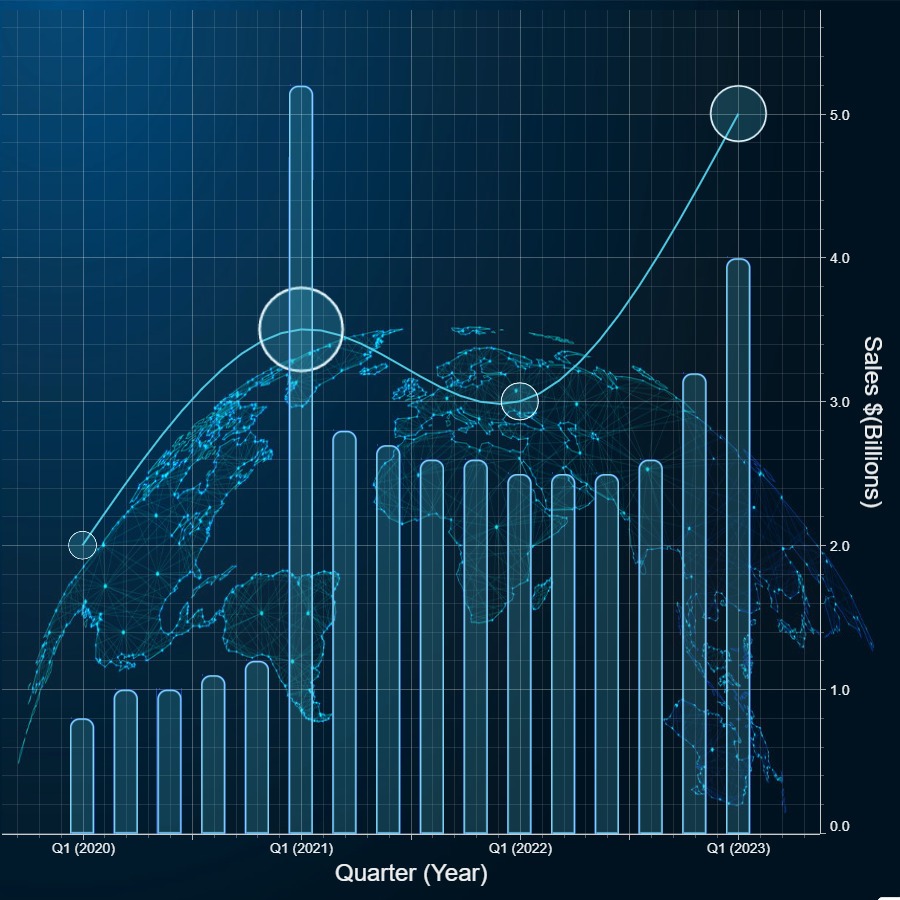
Background Image with Transparency
Demonstrates how to create a React Chart with background image using transparency in SciChart.js
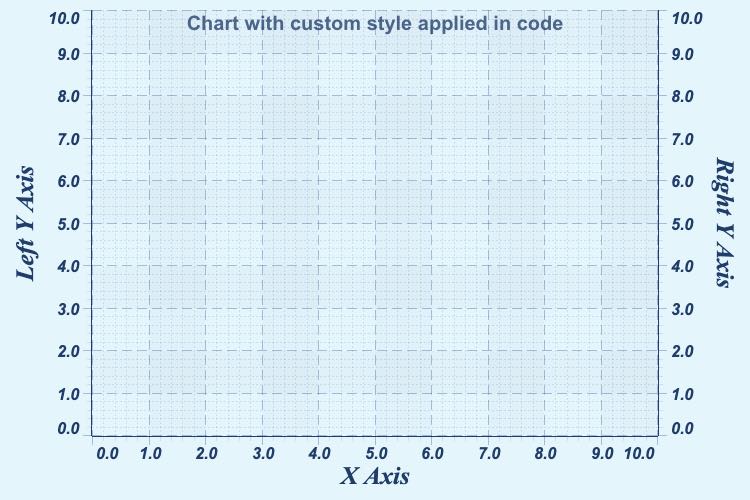
Styling a React Chart in Code
Demonstrates how to style a React Chart entirely in code with SciChart.js themeing API
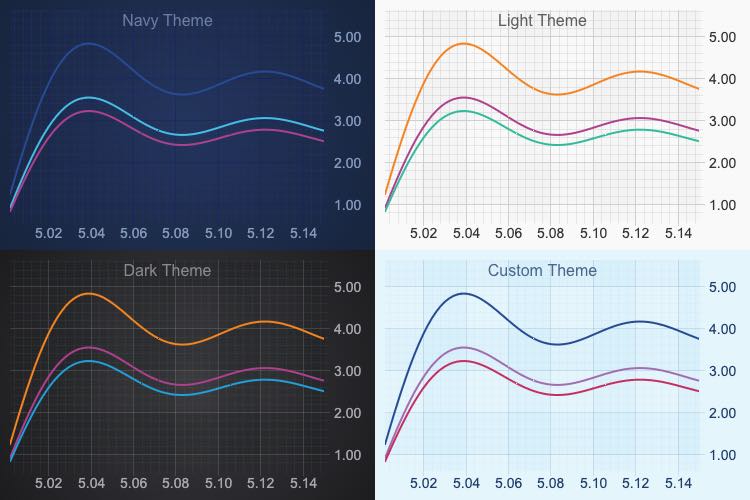
Using Theme Manager in React Chart
Demonstrates our Light and Dark Themes for React Charts with SciChart.js ThemeManager API
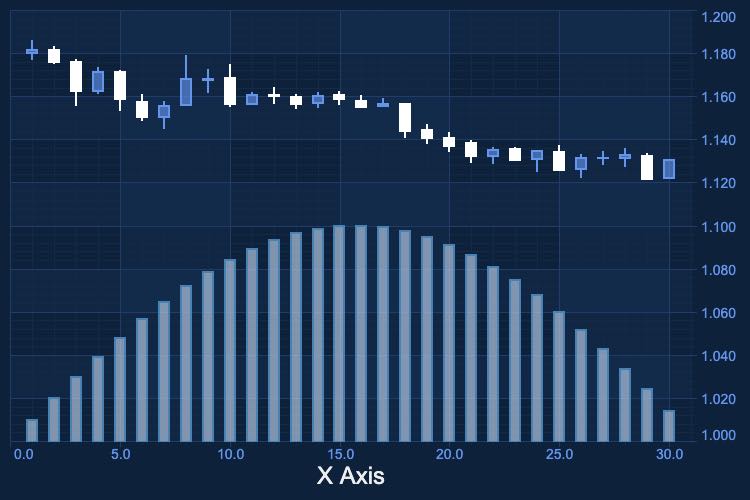
Create a Custom Theme for React Chart
Demonstrates how to create a Custom Theme for a SciChart.js React Chart using our Theming API
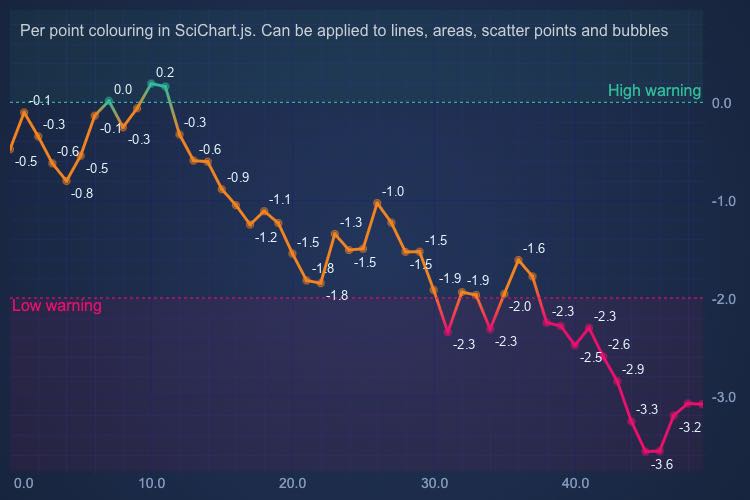
Coloring Series per-point using the PaletteProvider
Demonstrates per-point coloring in JavaScript chart types with SciChart.js PaletteProvider API
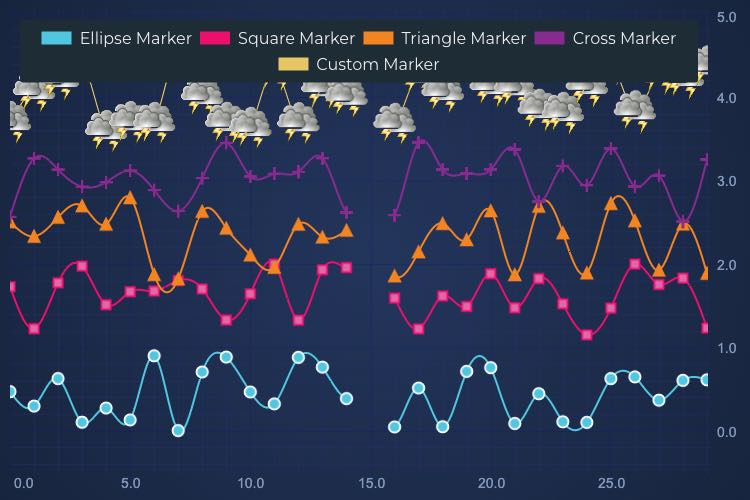
React Point-Markers Chart
Demonstrates the different point-marker types for React Scatter charts (Square, Circle, Triangle and Custom image point-marker)
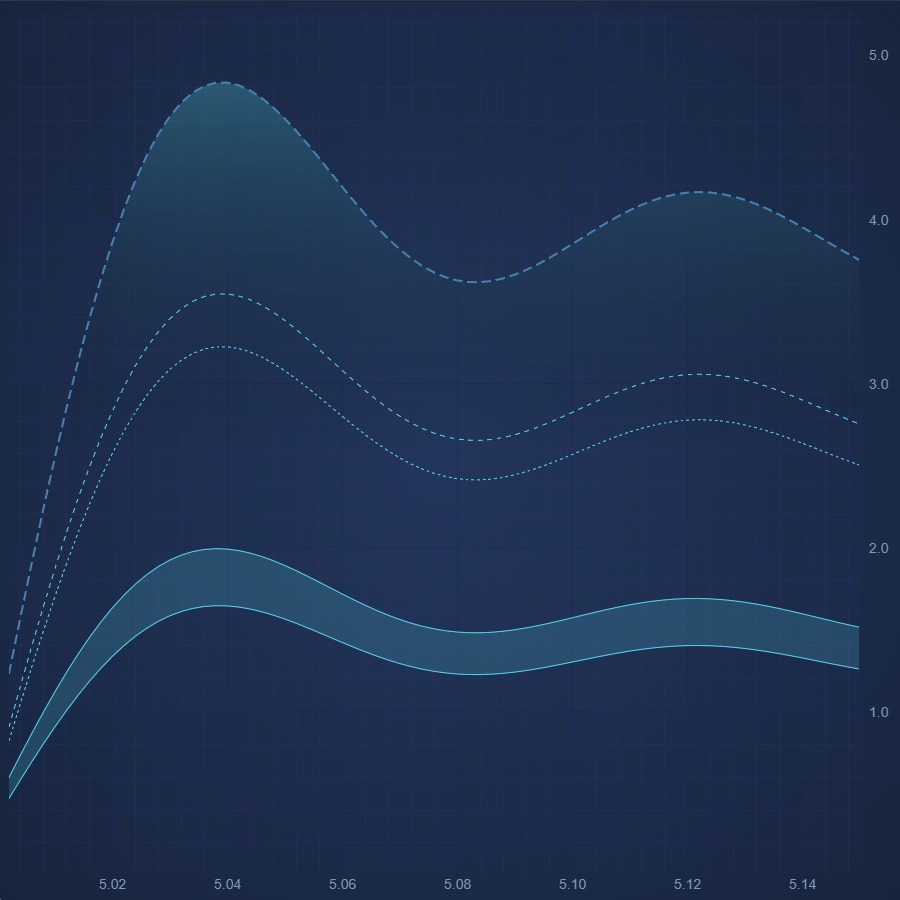
Dashed Line Styling
Demonstrates dashed line series in React Charts with SciChart.js
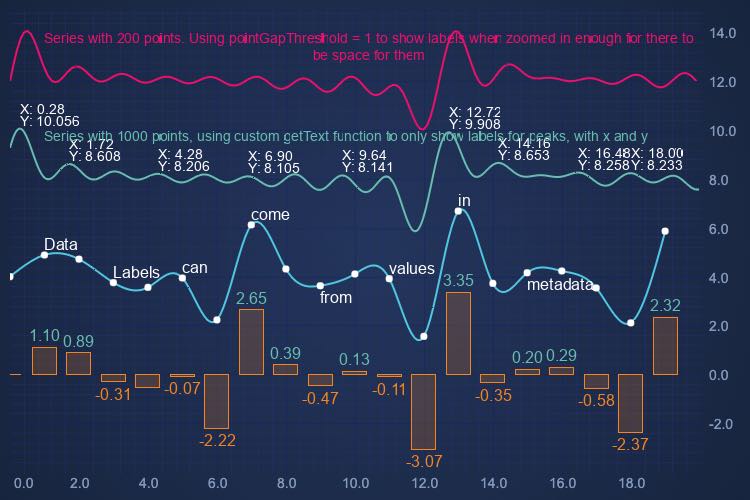
Data Labels
Show data labels on React Chart. Get your free demo now.
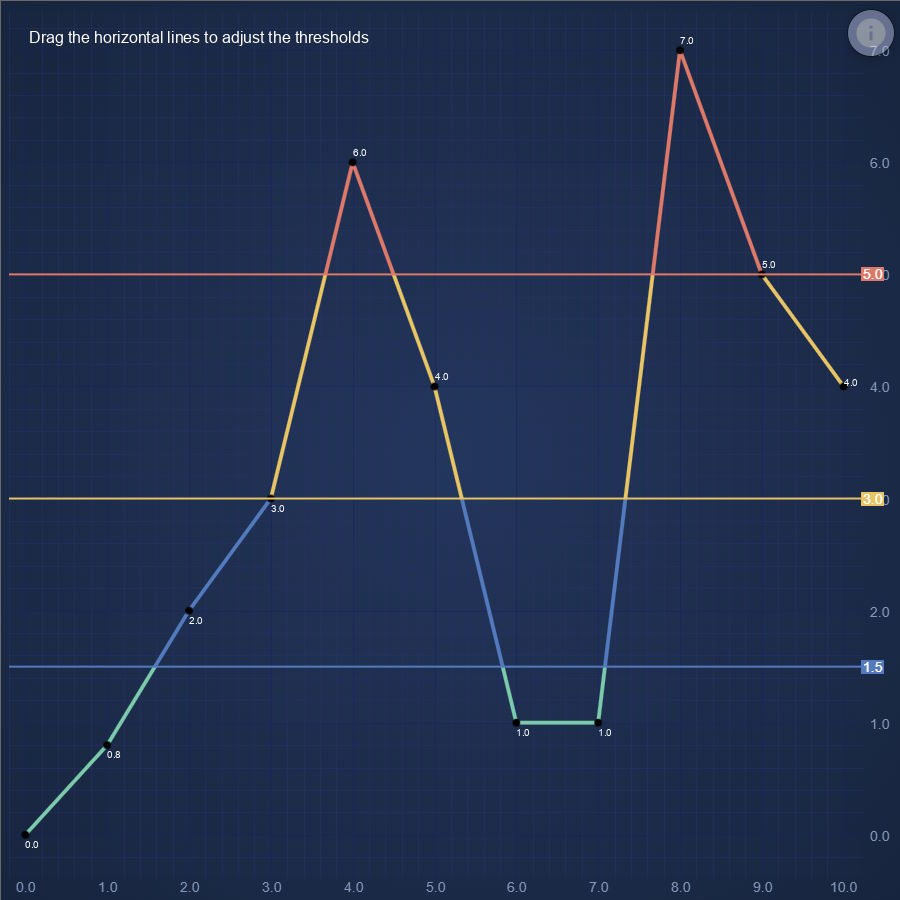
React Chart with lines split by thresholds
Demonstrates how to use a RenderDataTransform to split lines into multiple segments so they can be individually colored according to thresholds
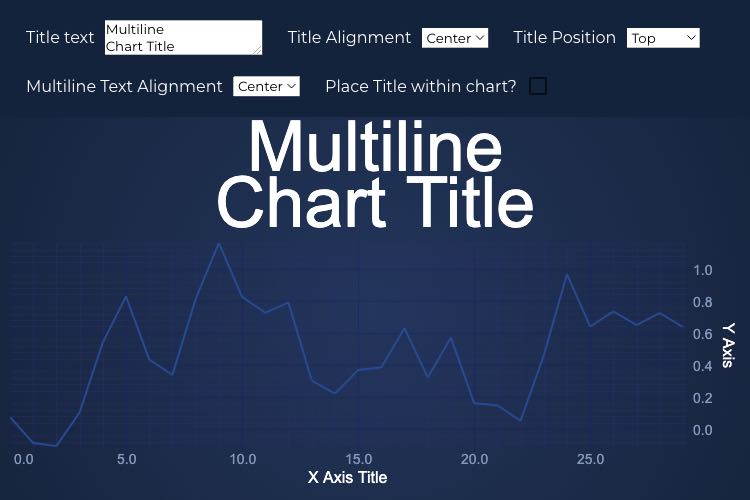
React Chart Title
Demonstrates chart title with different position and alignment options